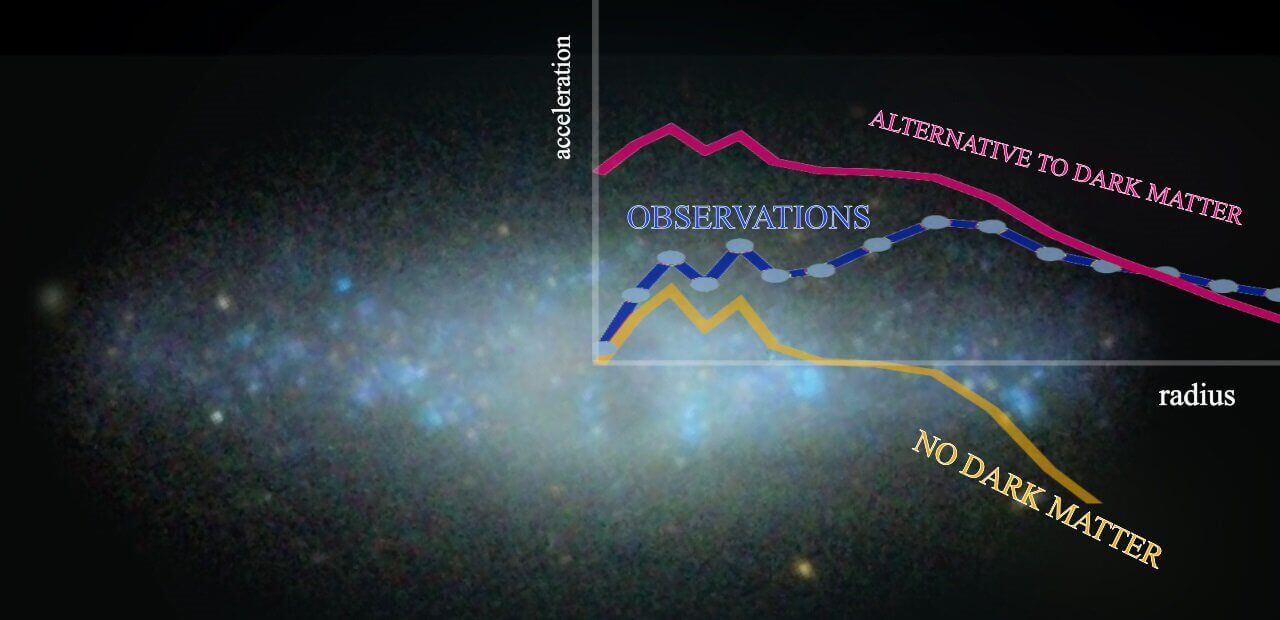Dark matter is one of the greatest mysteries of modern astrophysics and cosmology. Presumably, it accounts for 90 percent of the matter of the Universe, but so far the presence of dark matter has been recorded only in indirect ways, so in a recent study, the existence of this substance was questioned. However, the new scientific work carried out by the international institute SISSA allows us to resolve these doubts by disproving the universality of empirical relationships, which, according to previous studies, testified in favor of alternative hypotheses.
On an astronomical scale, the motion of objects occurs almost exclusively under the action of gravity, but the observed velocities of some celestial bodies, for example, stars in galaxies, differ from calculated ones in a larger direction, if we proceed from the mass of visible matter. To explain this phenomenon, a hypothesis of invisible, dark matter was proposed, the clouds of which surround galaxies and affect the speed of the stars that make up them.
Three years ago, colleagues from Case Western Reserve University argued in their study that cast doubt on the existence of dark matter. Analyzing the rotation curves of 153 classical spiral galaxies, they obtained an empirical relationship between the total gravitational acceleration of stars (observable) and the component that we would observe in the presence of only normal matter in classical Newtonian theory.
-Chiara Di Paolo, a doctoral student at the SISSA Institute
To test this ratio, di Paolo and his colleagues analyzed the rotation curves of other types of galaxies other than the spiral galaxies — 72 galaxies with low surface brightness and 34 dwarf disk galaxies. The researchers obtained more representative results by proposing a different relationship, which in addition to the general gravitational acceleration and its normal component also includes the radius of the galaxy and the parameters of its morphology.
According to the authors of the work, this new relationship, obtained by them for a sample of 104 galaxies, demonstrates the inaccuracy of the previously obtained empirical relationship and allows us to resolve doubts about the presence of dark matter in galaxies, indicating unequivocally its existence.
Dark matter exists – observations do not support alternative hypotheses
Click To Tweet
The post Dark matter exists – observations do not support alternative hypotheses appeared first on Upcosmos.com.
